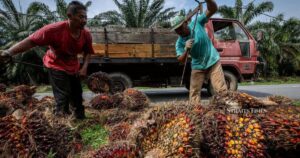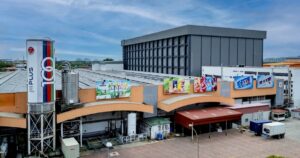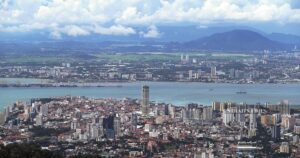KUALA LUMPUR: Malaysia’s diverse economic base and resilient domestic demand are expected to keep growth on track, economists said, echoing the government’s optimism about the country’s progress in strengthening economic diversity.
This follows remarks by Finance Minister II and acting Economy Minister Datuk Seri Amir Hamzah Azizan who said the government’s diversification initiatives are bearing fruit, with key sectors showing robust performances in the third quarter (Q3) of this year.
Amir Hamzah on Monday noted that all major sectors remained resilient in Q3, based on the Department of Statistics Malaysia’s advance estimate of 5.2 per cent gross domestic product (GDP) growth.
He cited strong showings in construction, private consumption and mining, which are projected to expand by 11 per cent, over five per cent and more than 10 per cent respectively.
Bank Negara Malaysia is due to release the official GDP data for Q3 on Friday.
Economist Doris Liew said the robust economic performance so far could be traced to two key factors: lower-than-expected reciprocal tariffs and continued frontloading by companies before Aug 7, as well as sustained strength in data centre construction and private consumption.
“Looking ahead, growth is likely to remain strong, led by the manufacturing and services sectors.
“Construction activity is expected to continue expanding, supported by the data centre boom and the realisation of previously pledged investments, which are injecting fresh capital into physical assets,” she told Business Times.
Bank Muamalat Malaysia Bhd chief economist Dr Mohd Afzanizam Abdul Rashid said Malaysia’s economy is well-diversified, with strong contributions across agriculture (6.3 per cent), mining (6.0 per cent), manufacturing (23 per cent), construction (4.0 per cent) and services (59.4 per cent).
“The performance of these key sectors has been very encouraging, helping to improve overall economic conditions.
“This is supported by various measures, particularly in infrastructure, as well as the inflow of foreign direct investment, which has driven the development of production facilities and data centres,” he said.
Afzanizam said these developments have spurred demand for raw materials, labour and support services, contributing to sustained economic activity and stronger fundamentals.
He expects Bank Negara Malaysia’s official GDP data to align closely with the advance estimate of 5.2 per cent growth for Q3.
“The industrial production index (IPI) rose to 4.9 per cent in Q3 from two per cent in the previous quarter, driven by stronger manufacturing and a sharp rebound in mining, which expanded by 10.3 per cent after four consecutive quarters of contraction,” he said.
He added that the labour market remains healthy, with unemployment hovering around three per cent, reflecting full employment conditions.
Afzanizam noted that Malaysia’s external performance has improved, with exports potentially rising 6.7 per cent in Q3 compared with 3.3 per cent in the preceding quarter, while the trade surplus would have widened significantly to RM50 billion from RM14.3 billion.
“Overall, these indicators point to a resilient domestic economy. Growth should remain fairly strong, supported by accommodative monetary policy and expansionary fiscal measures,” he said, projecting full-year GDP growth at around 4.5 per cent.
He said the government’s continued focus on infrastructure and industrial development, alongside steady inflows of approved investments, will help sustain economic momentum going forward.
IPPFA Sdn Bhd director of investment strategy and country economist Mohd Sedek Jantan said the latest hard data broadly supports the minister’s optimism, although the economy is now transitioning into a “late-expansion phase” rather than entering a new acceleration cycle.
“Malaysia’s IPI grew 5.7 per cent year-on-year in September – the strongest since mid-2023 – while manufacturing and mining remained solid. This confirms the industrial core is resilient,” Sedek said.
He said manufacturing sales reached RM169.3 billion, up 4.3 per cent year-on-year, while employment in the sector rose to 2.44 million, the highest since 2022.
“These are consistent with our MY36 Thermometer reading of 82.7, categorised as strong momentum,” he said.
However, Sedek cautioned that the S&P Global PMI, which registered at 49.8, signals some moderation in new orders and production momentum.
“While sectoral breadth is improving with manufacturing, mining and services each contributing positively, the intensity within consumer-linked manufacturing and domestic services remains uneven,” he said.
He expects GDP growth for Q3 to come in between 5.1 and 5.3 per cent, consistent with advance estimates, and said the quarter will likely mark the economy’s strongest period of the year.
Sedek identified electrical and electronics (E&E), advanced manufacturing, construction and infrastructure as the key growth drivers, while the property sector could underperform.
He added that Malaysia’s current macro-policy mix remains sound and adequate to sustain growth near 5 per cent in the near term.
“With the overnight policy rate at 2.75 per cent, inflation around 1.5 per cent, and the ringgit trading at RM4.16-RM4.18 per US dollar, Malaysia’s policy environment remains supportive. These conditions underpin macro stability and investor confidence,” he said.
© New Straits Times Press (M) Bhd






